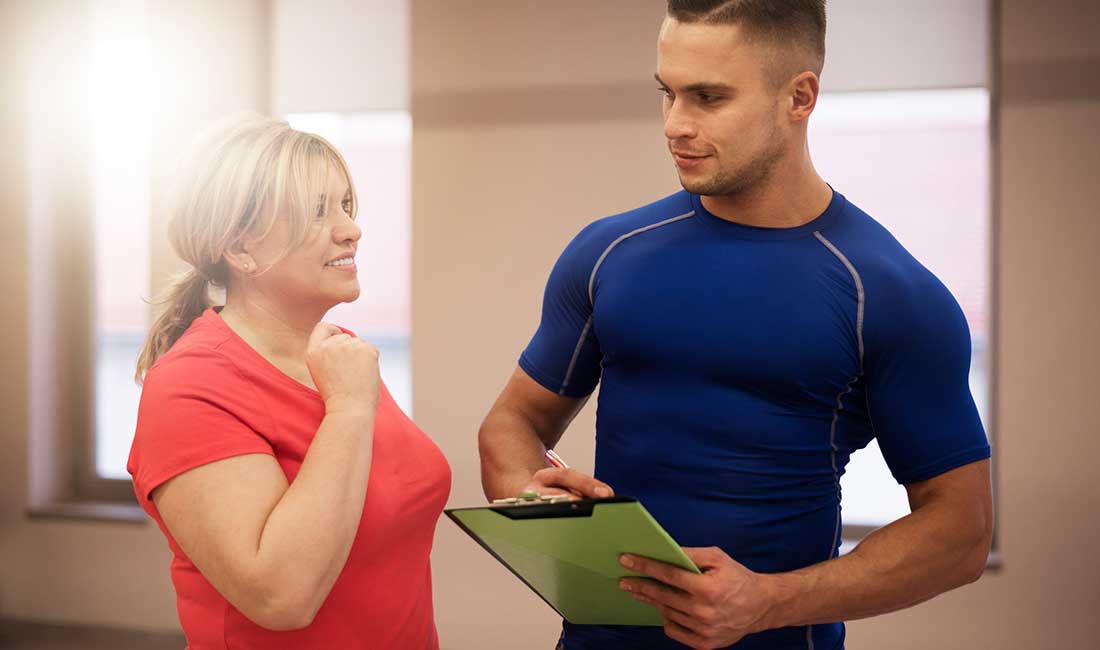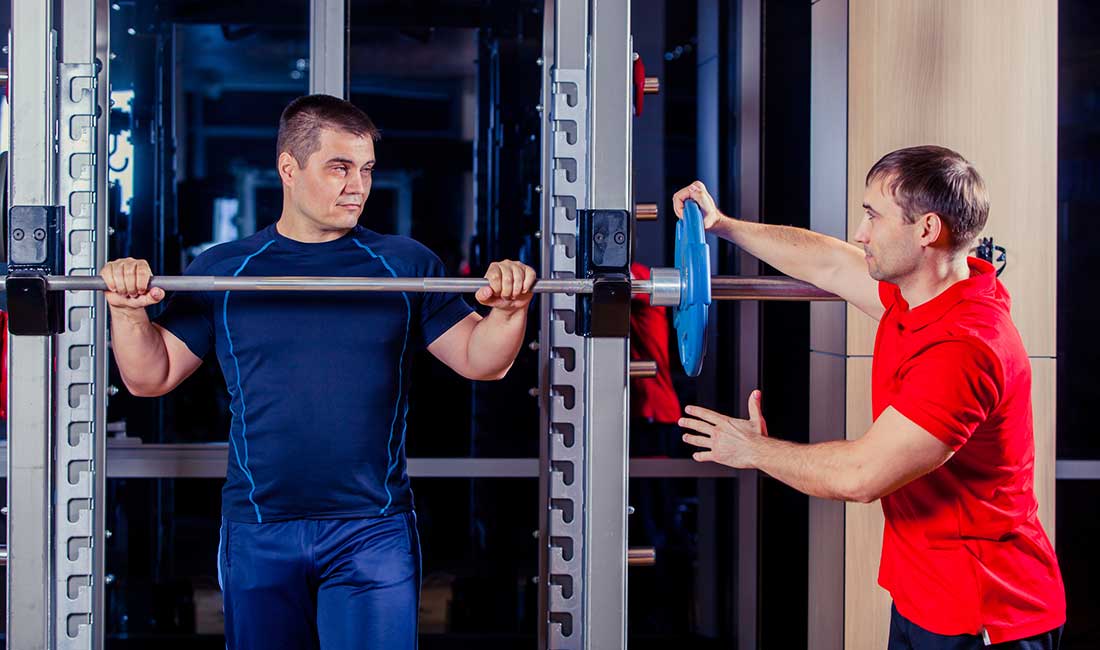Think about a movie you have seen that has impacted you in some way. Maybe it changed your perspective, outlook or behavior.
Did it affect you because of the resumes of the actors/directors and their ability to stick with the clearly defined movie templates they learned during film school? Or did you connect with the actors/directors ability to create a heightened emotional state while they told a story and created an experience relevant to you?
Odds are, the credentials of the director and actors gave the film credibility, but your ultimate opinion and response to the film was the result of the overall experience they created
This same phenomenon is true for the relationship between a health and fitness professional and his or her ability to create meaningful behavior change with clients.
A personal trainer’s education, certification and experience all provide the foundational knowledge and credibility necessary to be considered a true professional. It’s important to note, however, that a professional’s pedigree only goes so far when it comes to lighting a fire within a client to overcome barriers, create new habits and redefine his or her relationship with health.
Just like our favorite actors and directors create relevant and valuable cinematic experiences that keep us coming back for more, it’s important that health and fitness professionals learn how to create a positive and engaging training experience for their clients.
What type of experience is a personal-training client looking for? A client wants to feel important, competent and valued. They want to leave a training session feeling better than when they walked in. They want to feel welcome and safe in a studio or gym. Most of all, they want to feel confident that a health and fitness professional has his or her best interests in mind.
Creating this experience for clients is not a matter of just being an “energetic” butt-kicker. Rather, it’s a process of identifying all of the opportunities within a training session to connect and empower.
To more clearly identify these opportunities to empower clients for a lifetime, here are the four “E’s” to creating an unmatched training experience for your clients.
When the Client ENTERS Your Care

When clients leave their “outside world” behind for the hour to work with you, how do you transition them from their largely anonymous, most likely undervalued and often toxic life to a place of empowerment?
- Always greet clients by their first name as soon as possible when they come into your care. If you work in a facility, it’s essential that reception does this as well.
- Be ready and prepared for your client when he or she arrives. Don't frantically show up three minutes prior to the start of the session.
- Physical contact goes a long way toward making someone feel special. A touch on the shoulder, pat on the back, high five, handshake or even a hug (for “huggers” only!”) can help reassure clients that they are now in a place where they are welcome and important.
- Have something for clients to do if you are working with someone else. If possible, avoid telling them things like, “Go get on the treadmill until I’m ready.” Make sure they have a warm-up, foam roll or other routine they can do to get them engaged.
- Allow the client’s physical and emotional energy to gear the session. If a client comes in completely wiped out, don’t make that the “burpee challenge” day. If his or her body is aching, start with some manual stretching. Whether or not this is physiologically valid, it shows that the client’s needs today are more important than the program you wrote three weeks ago. Be willing to call an audible and go “off script” when necessary.
When They EXERCISE

The primary vehicle by which health and fitness professionals empower life change is through exercise. However, for exercise to be a positive experience, the physiological, neurological and psychological demands of an exercise session must be delivered in a way that makes clients feel confident and competent, and that they are under expert care.
Be a coach, not just a cheerleader. There is always a relevant, engaging way to teach and instruct movement. Instead of overwhelming clients with 500 exercises, help them master a handful that can really help them in their day-to-day lives.
- There is always a better way to run, breath, squat, grip, push-up, etc. Don’t just count reps and tell clients to “feel the burn.”
- Don’t forget to play! Even in the most targeted programs, there is room for activity merely for the sake of fun, as long as it’s safe. End a session with an appropriate fun game or challenge. Few things are more effective than fun when it comes to engaging clients and creating a long-lasting positive connection with exercise.
- Music can touch the soul. It can also feel like fingernails on a chalkboard. Keep in mind the age of the clients you are working with and find out what music they respond to. If they can’t help but “air guitar” to Van Halen, for example, you may want to put that on the playlist.
- Consider varying intensity between workouts. Adding non-stop high-intensity training to a non-stop high-intensity life is not always the best approach. Clients need to realize that exercise can be a “butt kicker,” but it can also be something that just makes the body feel good.
- Keep it simple! Clients want to feel confident and competent. Taking a poor, deconditioned system and challenging it with every gimmick and body angle on the planet makes little-to-no sense. Make the basics fun and relevant.
- Listen! Clients will tell you what does and doesn’t work for them. There is a difference between “Oh man, I hate those!” and “I really don’t like these.” Just because a book or another fitness professional says something is good doesn't mean you have to recommend it. Always pay attention to how clients respond to everything.
- Introduce clients to other staff and clients around them. A sense of belonging and community is essential for creating a positive client experience.
When They EXIT Your Care

As mentioned earlier, when a client comes to work with a fitness professional, he or she is often leaving behind a “sea of troubles” for an hour. As clients leave your care, help them with some strategies to deal with the “real” world.
- Slow down! Our clients live under sympathetic nervous system control nearly all of the time. The excitability of exercise puts this system on overload as well. Take time at the end of a session to switch on your client’s parasympathetic nervous system. A few minutes of breathing exercises, manual stretching or even reading a meaningful quote or book passage can help clients reenter the world with a clear, proactive mindset.
- Quickly discuss the relevance of the work you did that day and the client’s progress. Remember, there are so many more factors in training than calorie burn. How is your client’s energy after the workout? How does his or her body feel? If clients come in with aches and pains, check in on these. Prescribe some simple, relevant homework to help get clients out of pain, or get them closer to their goals. Make it simple and relevant.
- Clearly schedule appointments and deal with financial transactions in a professional way at the end of a session. Even though the money discussion can be uncomfortable, a client will appreciate a trainer who is clear and organized with the administrative side of the business.
When You EXTEND Your Influence
Most clients will work with a health and fitness professional two to three times per week. This is a very small percentage of time. Consider what you can do as a professional (outside of writing at-home workouts) to stay “in the client’s head” throughout the week.
- It’s a fact—clients don’t do at-home programs. However, they will do short, simple things like foam rolling, breathing exercises, etc. How simple of an activity can you design for them to do at home? You’re still influencing their lives in a positive way.
- Educate and provide resources for clients on relevant topics. What do your clients struggle with outside of exercising? Sleep? Nutrition? Energy? Write or curate resources on these important topics and send clients home with them. If you are writing these resources, the shorter the better, and use bullets.
- When socializing with clients, take away the stigma of “perfection.” Health and fitness professionals aren’t always perfect health specimens—a fact that is essential for clients to know. Go out to dinner and have a burger and a drink with a client. It’s important that they seemthat health is a balanced undertaking. This also makes us appear more “human” and increases our connection.
- Think of the shortest, simplest way you can present information, such as short quotes, rhymes, acronyms, etc. These stick with a client much more effectively than drawn-out technical manafestos.
As you can see, the process of creating an unmatched client experience comes down to having a plan for when they enter, exercise, exit and extend your influence. Spend some time and energy making sure each of these aspects of your training sessions are unique, engaging and effective so you create a “blockbuster” experience that can change a client’s life.




 by
by 









 by
by